


Dusun IoT manufactures industrial level IoT LoRaWAN Gateways for Indoor and outdoor using scenarios. It has a LoRa concentrator that receives RF signals from LoRaWAN devices and converts them to signals compatible with a LoRaWAN network server, such as Wi-Fi, LTE, in order to deliver data to the cloud.
Wireless network coverage may be readily and economically scaled up with the LoRaWAN network topology by deploying multiple LoRaWAN gateways. If one gateway fails, the data from the end nodes can still be received by other gateways. This will improve network reliability while also lowering maintenance costs.
RAM: 2GB; eMMC: 32GB
Protocols: Bluetooth 5.2, LoRaWAN, Wi-Fi 2.4G, LTE Cat1/ Cat M1, GPS
LoRa Frequency: CN470, RU864, IN865, EU868, US915, AU915, KR920, AS923
CPU: RK3588 Quad-core ARM
RAM: 8GB LPDDR4
eMMC: 64GB
Protocol: Wi-Fi 6, 2.4G/5G, LTE Cat1 / Cat4, Bluetooth 5.2, LoRaWAN
RAM: 2GB; eMMC: 32GB
Protocls: Wi-Fi 2.4G/5G, Bluetooth 5.2, LoRaWAN, GPS
LoRa Frequency: CN470, RU864, IN865, EU868, US915, AU915, KR920, AS923
RAM: 128MB; eMMC: 4GB
Protocols: Wi-Fi 2.4G/5G, Bluetooth 5.2, LoRaWAN, GPS
LoRa Frequency: CN470, RU864, IN865, EU868, US915, AU915, KR920, AS923
RAM: 2GB; eMMC: 32GB
Protocols: Bluetooth 5.2, LoRaWAN, Wi-Fi 2.4G/5G, LTE Cat1
LoRa Frequency: CN470, RU864, IN865, EU868, US915, AU915, KR920, AS923
The LoRaWAN® network architecture uses a star-of-stars topology, with LoRaWAN gateways relaying messages between end-devices and network servers. End nodes will gather information, LoRa gateway hardware concentrate and upload data. A LoRaWAN network server will consolidate data and upload to the respective application server while simultaneously implementing device authentication, and an application server will process or display data.
Built-in stable firmware and LoRa MQTT API.
Concurrent communication, and high receiving sensitivity.
Fiberglass antenna with high directivity and efficiency. Deep indoor and outdoor coverage and penetration
A broad range of LoRa frequency band can be used at no cost: CN470, RU864, IN865, EU868, US915, AU915, KR920, AS923
Adopts modular design, which can be quickly tailored by excluding or adding components and features. Coming with Zigbee 3.0, Wi-Fi 2.4G/5G, BLE 5.2, GPS, Sub-GHz, etc. Streamline the way of sending various data to the cloud.
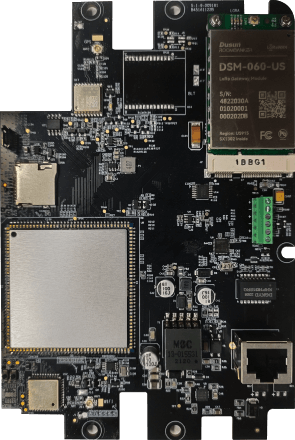
You can choose Ethernet for speed, or wireless LTE 4G and Wi-Fi for flexible deployment across a range of locations
Support popular public LoRaWAN network server TTN, Chirpstack, AWS IoT Core, LORIOT. Private LoRa Network for bulk order.
Extra Solar panel power for seamless connectivity and maintenance free in remote spots
Data integrity is enhanced by using AES-128 encryption all the time.
Compatible with a range of LoRaWAN channels with support for up to 8 channels to receive data simultaneously.
Dusun IoT provides comprehensive, rigorously tested development resources, ensuring high reliability and efficiency. Our expert FAE team offers personalized one-on-one support for customers addressing technical challenges during LoRaWAN gateway secondary development, accelerating time-to-market and gaining a competitive edge.
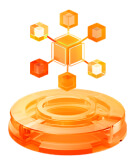
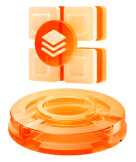
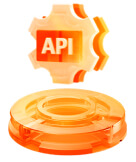

LoRaWAN network is a type of low-power wide-area network (LPWAN) protocol based on LoRa (Long Range) technology. It is designed for long-distance communication between radio devices, particularly suitable for IoT (Internet of Things) applications that require low power consumption and infrequent data transmission. LoRaWAN is structured to provide a network where data from sensors and devices is transmitted to a central server through multiple LoRaWAN gateways.
Public LoRaWAN networks are relatively widespread in urban areas, establishing it is also simple, and the expenses of accessing the network are thus maintained low, making it an economical alternative. Dusun support LoRaWAN gateway built-in integration with popular public LoRaWAN network server including The Things Network, Chirpstack, AWS IoT Core, etc.
Some may choose for private LoRaWAN networks, which are a little more sophisticated but have the advantage of being able to readily monitor traffic without relying on a third party. You have complete control over the gateway’s position, which can boost efficiency and allow you to work even in the most remote or difficult-to-reach regions.
Running a private LoRaWAN network also allows you to customize capacity per gateway and load your own firmware to make it genuinely specialized for its role. In general, a private LoRaWAN gateway provides greater edge processing flexibility and security.
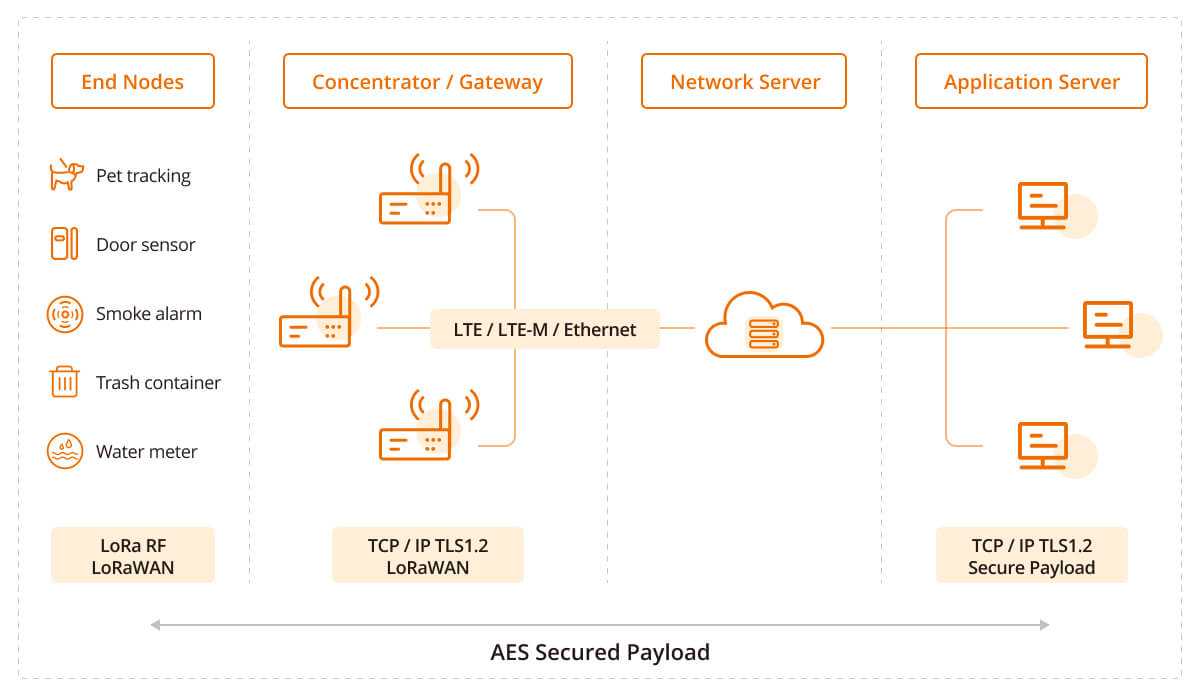
Expand the capabilities of your existing products with Dusun’s zero-code LoRa IoT devices.
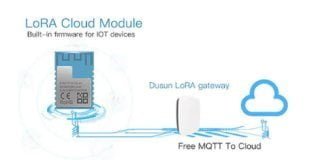
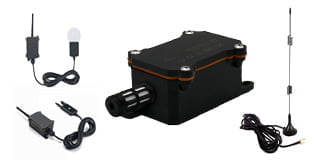
LoRaWAN (Long Range Wide Area Network) is a low-power, wide-area networking protocol designed for wireless battery-operated devices. It enables long-range communication over large areas, consuming minimal power, making it ideal for IoT (Internet of Things) applications.
LoRaWAN is an open standard, managed by the LoRa Alliance, which is a non-profit organization that promotes and develops the technology. There are many LoRaWAN-compatible devices and solutions available from a variety of vendors, making it a popular choice for IoT applications.
LoRaWAN is a Media Access Control (MAC) layer protocol specifically designed to operate on top of the LoRa modulation technique. The core function of LoRaWAN is to manage the complexity of bi-directional communication between devices and the LoRaWAN network. Here’s a detailed breakdown of how LoRaWAN works:
End Devices: These are sensors or other IoT devices that collect and transmit data. They come in three classes:
LoRaWAN Gateways: These devices act as bridges between end devices and the network server. They receive signals from end devices and forward them to the network server via standard IP connections. Gateways can handle multiple frequencies and data rates simultaneously, managing bidirectional communication.
Network Server: This server orchestrates overall network management, including deduplication of messages, managing adaptive data rate (ADR), and ensuring the efficient operation of the network.
Application Server: This server processes and utilizes the data collected from end devices, providing interfaces for data visualization and integration with other systems.
LoRaWAN employs a star-of-stars topology where end devices communicate directly with gateways. This direct communication, enabled by LoRa’s long-range capability, eliminates the need for mesh networking and reduces the power consumption of end devices.
LoRa modulation, based on Chirp Spread Spectrum (CSS), allows for robust long-range communication with low power usage. LoRaWAN uses this modulation technique at the physical layer and builds a MAC layer protocol on top to handle message timing, format, and error-checking.
LoRaWAN uses adaptive data rate mechanisms to optimize data rates, transmission power, and time-on-air for each device, maximizing battery life and network capacity. Devices can dynamically adjust data rates based on network conditions and communication distance, enhancing performance and reliability.
Security in LoRaWAN is ensured through AES-128 encryption with two main keys:
LoRaWAN’s low power, long range, and high capacity make it ideal for various applications, such as smart city infrastructure, agricultural monitoring, industrial IoT solutions, and environmental monitoring. Its ability to operate on license-free bands further facilitates widespread adoption.
In summary, LoRaWAN provides a robust and scalable networking solution that leverages the LoRa modulation technique to offer low-power, long-range communication tailored for IoT applications, supported by a well-defined architecture and secure protocols
LoRaWAN gateways are your secure link between data and servers. Thousands of devices can run off a single gateway if needed. The benefit of the LoRaWAN gateways is that they provide everything you need to create a complete IoT network.
LoRaWAN gateways serve as the interface between the end devices and the network server. They play a critical role in ensuring that data from IoT devices reaches the network server for processing and routing to the appropriate application servers. Here’s a detailed overview of how LoRaWAN gateways access the network:
Dusun LoRaWAN Gateway now supports ChirpStack, The Things Network, AWS IoT Core LoRaWAN
The LoRaWAN gateway now supports Class A, Class C lorawan sub-device connections
The gateway has a local Luci HTTP server configuration page for customers to configure the selected platform
If the demand reaches a certain value, Dusun can assist in customizing the customer’s own logo.
Sample orders generally ship within 3-10 days. For mass production orders, delivery is generally arranged within 4-6 weeks from the payment date. If there is custom demand, the time negotiated by both parties shall prevail. The transportation method generally adopts UPS logistics by default, and customers can communicate with the sales person in charge if they have specific needs.
Theoretical amount: assuming the amount of data packets a single LoRaWAN gateway receives per day is A, and the packet frequency of each node is B data packets per hour. The theoretical maximum number of nodes that may be supported by a single gateway is computed as S=A/(24* B).
Actual amount: The real value of the maximum nodes that a single gateway can support is far more difficult than the theoretical figure. The maximum amount of data packets a gateway may receive per day is known, but the challenge resides in how many packets each node delivers each day.
In the same application, the overall amount of data sent from the nodes every day is known, but the packet length and transmission rate will be transferred are unknown. If the packet length varies, the number of packets transmitted must also vary. Therefore, it is recommended to consult with our FAE engineers regarding the network capacity of LoRaWAN gateways.
| Cookie | Duration | Description |
|---|---|---|
| cookielawinfo-checkbox-analytics | 11 months | This cookie is set by GDPR Cookie Consent plugin. The cookie is used to store the user consent for the cookies in the category "Analytics". |
| cookielawinfo-checkbox-functional | 11 months | The cookie is set by GDPR cookie consent to record the user consent for the cookies in the category "Functional". |
| cookielawinfo-checkbox-necessary | 11 months | This cookie is set by GDPR Cookie Consent plugin. The cookies is used to store the user consent for the cookies in the category "Necessary". |
| cookielawinfo-checkbox-others | 11 months | This cookie is set by GDPR Cookie Consent plugin. The cookie is used to store the user consent for the cookies in the category "Other. |
| cookielawinfo-checkbox-performance | 11 months | This cookie is set by GDPR Cookie Consent plugin. The cookie is used to store the user consent for the cookies in the category "Performance". |
| viewed_cookie_policy | 11 months | The cookie is set by the GDPR Cookie Consent plugin and is used to store whether or not user has consented to the use of cookies. It does not store any personal data. |

